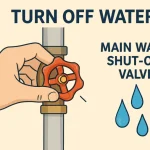Let’s face it: driving can be stressful. Between traffic, road rage, unexpected weather, and distracted drivers, just getting from point A to point B can feel like navigating a minefield. But here’s the truth — while you can’t control what everyone else does on the road, there’s a lot you can do to protect yourself and reduce crash chances. If you’ve ever felt that pit in your stomach after a near-miss or wondered what you could’ve done differently, you’re not alone. This article is here to help. We’re going to break down realistic, everyday steps you can take to become a safer, more aware driver.
1. Don’t Just Drive — Think Ahead
One of the best ways to reduce crash chances is to drive proactively, not reactively. What does that mean?
Think of driving like a game of chess. The best players think several moves ahead. They anticipate what other players are going to do. That’s how you should drive.
- Notice brake lights several cars ahead.
- Watch for people drifting between lanes.
- Stay alert to pedestrians who may cross unexpectedly.
It’s all about staying alert, not just to the car directly in front of you, but to the entire flow of traffic around you.
2. Ditch the Distractions (Yes, That Means Your Phone)
We all know distracted driving is dangerous — but it’s still one of the top reasons for crashes. It only takes a few seconds of looking away for everything to go wrong.
Put your phone on Do Not Disturb mode or toss it in the glove box if you’re easily tempted. Adjust your mirrors, set your playlist, and enter your destination before you shift into drive.
Multitasking and driving do not mix. Staying focused is a simple way to drastically reduce crash chances.
3. Stick to the Speed Limit — And Adjust for Conditions
Speeding doesn’t save as much time as people think. In fact, those few extra minutes often come at the cost of much higher risks.
The posted speed limit is based on ideal conditions. But if it’s raining, foggy, or dark, slow down even more. Slippery roads and poor visibility don’t pair well with fast driving.
It’s not just about obeying the law. It’s about giving yourself enough time to react if something unexpected happens — and trust us, it often does.
4. Leave Some Breathing Room
Tailgating is a recipe for disaster. It doesn’t matter if the driver in front of you is going a little slower than you’d like — riding their bumper won’t help.
Here’s a good rule: stay at least three seconds behind the car in front of you. Increase it to five or six seconds in bad weather.
That space gives you more time to brake safely, react to sudden stops, and avoid pile-ups.
5. Use Your Mirrors Like a Pro
Your mirrors are more than decorations. They’re your eyes to the world around you.
Check your mirrors every 5–8 seconds, especially before changing lanes or slowing down. And don’t forget the blind spots. Just because you don’t see a car doesn’t mean it’s not there.
Make mirror-checking a habit — just like signaling and shoulder checks. It’s a small move that can make a huge difference in reducing your chances of a crash.
6. Be Extra Cautious at Intersections
Did you know intersections are one of the most common places for accidents? It makes sense — lots of cars, people, and distractions all in one spot.
When the light turns green, take a second before moving. Look both ways to make sure no one is blowing through the red. When turning left, double-check for oncoming traffic and pedestrians.
And if you’re turning right on red? Come to a complete stop. You’d be surprised how many crashes could be avoided with that one simple habit.
7. Don’t Drive Tired — It’s Just as Bad as Being Impaired
A lot of people underestimate the dangers of drowsy driving. But fatigue slows your reaction time, impairs judgment, and can cause you to nod off without realizing it.
If you’re yawning constantly, struggling to keep your eyes open, or drifting between lanes — pull over. Take a short nap, grab a coffee, or switch drivers if you can.
Better to be late than to not make it at all.
8. Maintain Your Vehicle Regularly
You wouldn’t run a marathon in broken sneakers — so why drive long distances in a car that’s not in good shape?
Check your brakes, tires, lights, and windshield wipers regularly. Get oil changes and tune-ups on schedule. A well-maintained vehicle responds better in emergencies and gives you one less thing to worry about.
Simple maintenance = fewer breakdowns = lower crash risk.
Also Read: Master’s in Singapore: Your Gateway to Global Career Success
9. Stay Calm — Even When Others Don’t
Road rage is real. But getting angry behind the wheel won’t solve anything — and often makes situations worse.
If someone cuts you off, don’t retaliate. If someone’s tailgating, let them pass. Don’t escalate bad driving with more bad driving.
Staying calm helps you stay in control, which is the key to avoiding unnecessary crashes.
10. Learn Defensive Driving Techniques
If you’ve never taken a defensive driving course, it’s worth looking into. These classes teach you how to anticipate dangers and respond to them smartly.
Even if you’ve been driving for years, a refresher course can help fine-tune your skills and help you reduce crash chances significantly.
FAQs: Reduce Crash Chance
Q1: What is the #1 cause of car crashes?
A: Distracted driving tops the list, especially smartphone use. Staying focused behind the wheel is your first line of defense.
Q2: How many seconds should I stay behind another vehicle?
A: Use the 3-second rule in good weather. Add more space in rain, snow, or fog.
Q3: Can the weather increase crash risk?
A: Absolutely. Rain, fog, snow, and ice reduce visibility and road grip, which increases stopping distance and lowers control.
Q4: Does vehicle maintenance help reduce crash chances?
A: Yes. Worn tires or bad brakes can turn a close call into a collision. Regular check-ups go a long way.
Q5: Is it worth taking a defensive driving course?
A: Definitely. These courses teach you how to spot and avoid potential hazards before they become serious.
Conclusion: Small Habits, Big Impact
Crashes don’t always come out of nowhere. In many cases, they’re the result of distractions, impatience, or habits that went unchecked. The good news? That means there’s a lot you can do to lower your risk. From staying focused and leaving space to maintaining your car and driving defensively, the little things matter. By making safer choices behind the wheel, you’re not just protecting yourself — you’re also protecting your passengers, other drivers, and pedestrians around you. So the next time you’re on the road, slow down, stay alert, and drive like lives depend on it — because they do. Looking to reduce crash chances? Start with these tips, and you’ll already be ahead of the curve.







